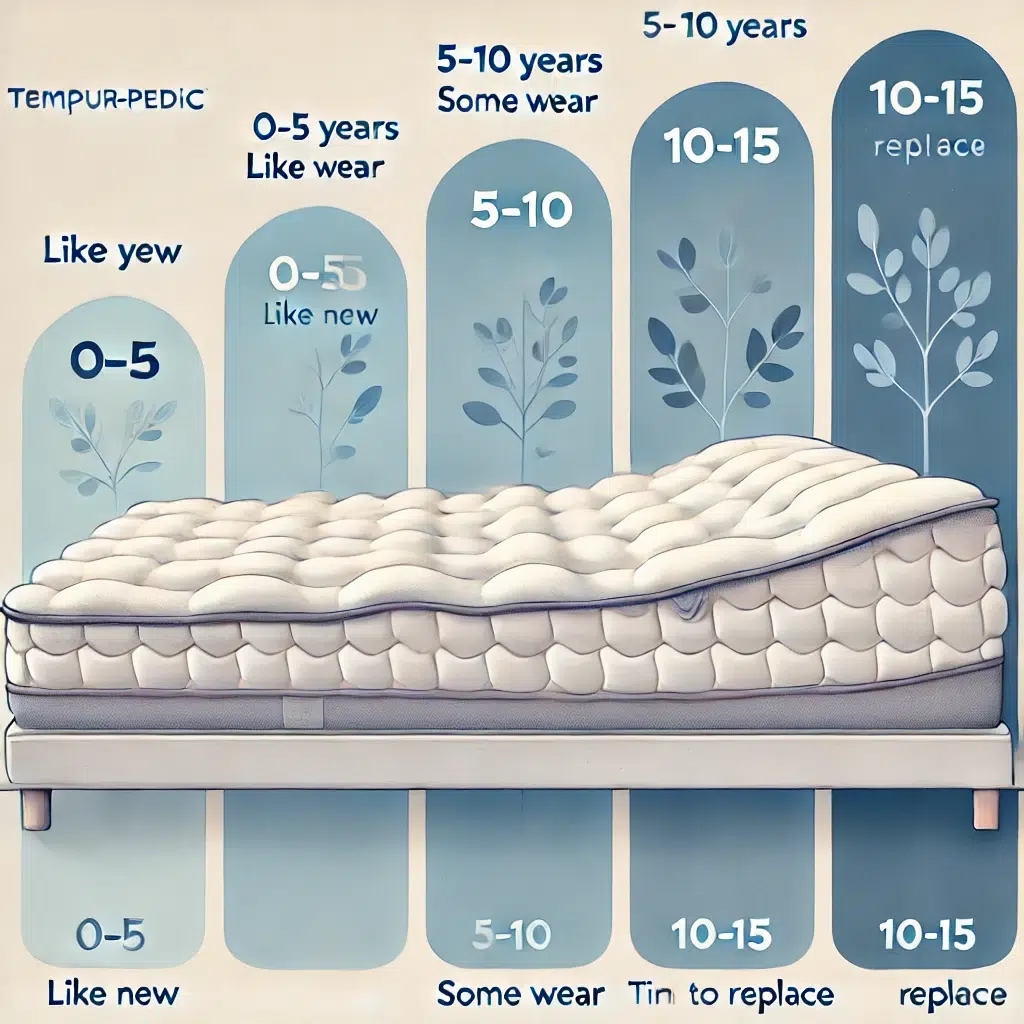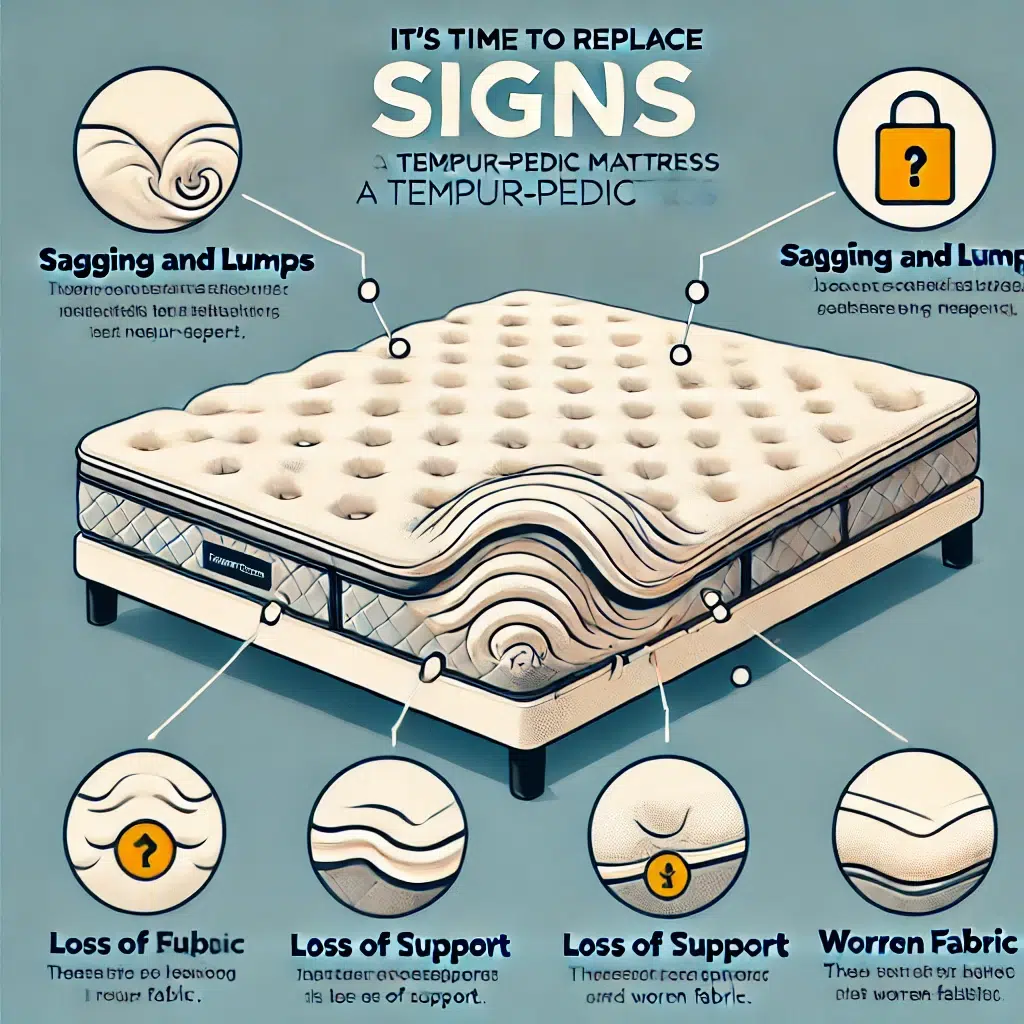If you’re considering a Tempur-Pedic mattress, or you already own one, you’re probably wondering: How long should a Tempur-Pedic mattress last? These high-quality memory foam beds are designed to be durable, but like all mattresses, they won’t last forever.
In this guide, we’ll dive into how long you can expect a Tempur-Pedic mattress to last, factors that affect its lifespan, and tips to keep yours in great shape for as long as possible.
How Long Do Tempur-Pedic Mattresses Last?
On average, a Tempur-Pedic mattress lasts between 10 to 15 years with proper care. Some people report using theirs for even longer, but after a decade or so, you might start noticing sagging or a decline in support.
This lifespan is longer than most traditional spring mattresses, which typically last about 7 to 10 years. Tempur-Pedic mattresses are made with high-density memory foam that resists wear and tear better than cheaper foam alternatives.

Factors That Affect Tempur-Pedic Mattress Longevity
Not all Tempur-Pedic mattresses will last the same amount of time. Several factors can influence their durability:
- Usage & Weight Distribution – If the mattress is used every night versus occasionally in a guest room, it will naturally wear out faster. Heavier sleepers may also notice compression over time.
- Care & Maintenance – Taking good care of your mattress—using a mattress protector, rotating it occasionally, and keeping it clean—can extend its lifespan.
- Model & Firmness Level – Firmer Tempur-Pedic models generally last longer than softer ones because they resist sagging better.
- Base/Foundation – Using a supportive base, like a Tempur-Pedic adjustable base, prevents premature wear and keeps the mattress in good shape.
How to Extend the Life of Your Tempur-Pedic Mattress

To get the most out of your Tempur-Pedic bed, follow these simple care tips:
1. Use a Mattress Protector
Tempur-Pedic mattresses aren’t waterproof, so a good mattress protector will prevent moisture damage from spills, sweat, and humidity.
2. Keep It Clean
Dust, sweat, and body oils can break down foam over time. Most Tempur-Pedic mattresses have removable, washable covers, so be sure to clean them regularly.
3. Avoid Jumping on the Bed
While Tempur-Pedic mattresses are durable, excessive pressure—like kids jumping on the bed—can damage the foam layers and cause premature sagging.
4. Rotate It Occasionally
You don’t need to flip a Tempur-Pedic mattress (they are designed for one-sided use), but rotating it every 6-12 months can help distribute wear evenly, especially if you sleep in the same spot every night.
Tempur-Pedic Warranty & What It Covers
Tempur-Pedic stands behind its products with a 10-year limited warranty, which covers issues like:
- Visible sagging greater than ¾ inch (without excessive wear)
- Cracks or physical defects in the foam
- Manufacturing defects in the cover
However, the warranty doesn’t cover normal wear and tear, personal comfort preferences, or damage caused by improper use (like using the wrong foundation).
When Should You Replace a Tempur-Pedic Mattress?

Even though Tempur-Pedic mattresses last a long time, you’ll eventually need to replace yours. Signs that it’s time for a new mattress include:
- Sagging or indentations deeper than ¾ inch
- Loss of support, causing back or joint pain
- Waking up feeling unrested, even after a full night’s sleep
- Noticeable wear & tear, like cracking foam or fabric issues
If your Tempur-Pedic mattress is 10+ years old and showing these signs, it might be time for an upgrade.
Final Thoughts :
Tempur-Pedic mattresses are known for their durability and comfort, making them a great long-term investment. With proper care, they can easily last 10-15 years or more, outlasting many other mattress types.
By using a mattress protector, keeping it clean, and rotating it occasionally, you can enjoy years of restful sleep. And when it does reach the end of its lifespan, replacing it with another Tempur-Pedic can be a worthwhile choice.
If you’re wondering whether your mattress is still in good shape, ask yourself: Am I still sleeping comfortably? If the answer is no, it may be time for a new one.


